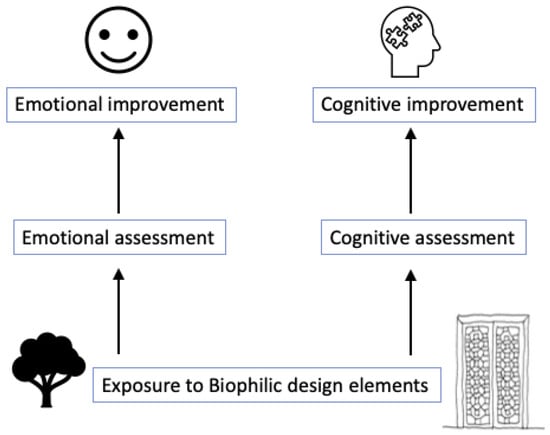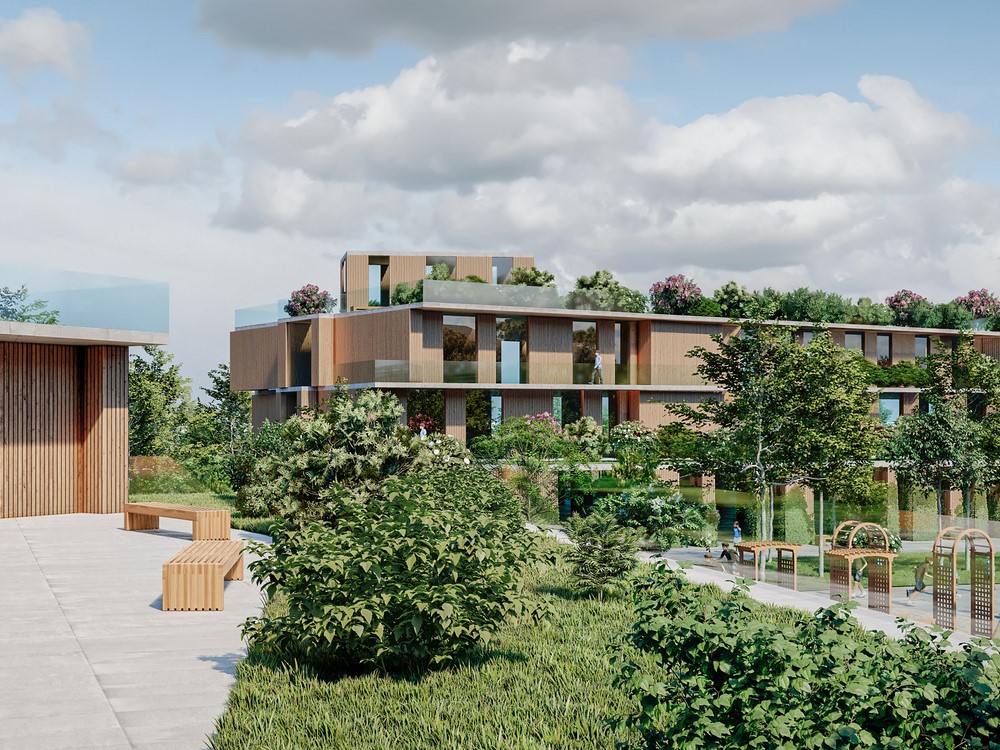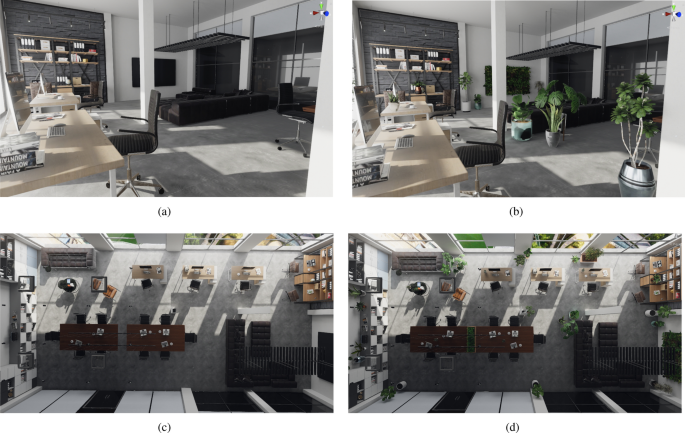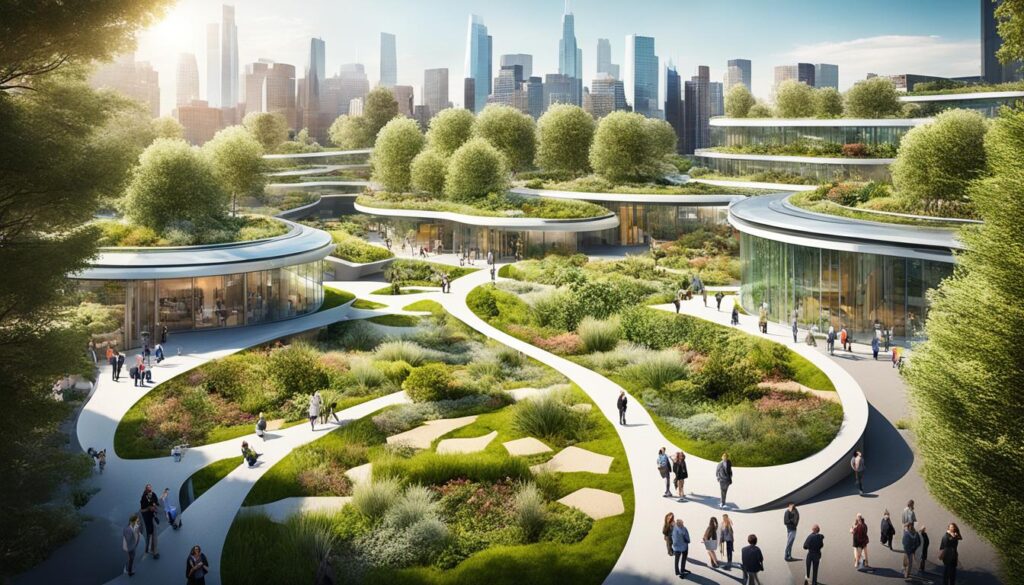The Role of AI in Enhancing Biophilic Design: A Comprehensive Guide
In an era characterized by the increasing intersection of technology and nature, the integration of artificial intelligence and biophilic design is transforming our built environments.
This article examines how technology enhances the principles of biophilic design, facilitating spaces that promote a deeper connection to nature.
We will analyze the benefits and limitations of technology in this context, focusing on its role in optimizing natural light and air quality, as well as its impact on human well-being.
We invite you to explore the applications, ethical considerations, and the promising future of this harmonious integration.
What is AI in Biophilic Design?
Artificial Intelligence (AI) in biophilic design signifies the integration of advanced computational techniques with nature-inspired design principles, aimed at creating environments that enhance human well-being and foster an emotional connection to nature.
This innovative approach not only improves aesthetic appeal but also promotes environmental sustainability through the utilization of eco-friendly materials and smart building technologies.
By employing machine learning and design algorithms, AI can analyze user behavior patterns and preferences, facilitating the development of adaptive environments that support cognitive benefits and psychological health.
The objective is to incorporate nature more effectively into our built environments, thereby strengthening our connection to the natural world and promoting resilience.
How Does AI Enhance Biophilic Design?
Artificial intelligence significantly enhances biophilic design by utilizing advanced digital design tools and predictive analytics to optimize the integration of nature within architectural spaces. This approach fosters the creation of immersive environments that resonate with users.
The capacity of artificial intelligence to analyze extensive data sets enables the development of customized design solutions tailored to individual preferences, thereby enhancing user experience and engagement.
Additionally, insights derived from AI facilitate the ongoing refinement of designs through user feedback, ensuring the effective implementation of biophilic principles in both residential and commercial settings.
What Are the Benefits of AI in Biophilic Design?
The benefits of artificial intelligence (AI) in biophilic design are multifaceted, significantly enhancing health outcomes, energy efficiency, and emotional responses among users. Through the intelligent analysis of behavioral patterns, AI give the power tos designers to create environments that promote well-being by optimizing natural light, improving air quality, and incorporating carefully selected indoor plants.
The integration of AI also facilitates community engagement and resilience by allowing environments to adapt to the occupants’ needs, ultimately contributing to a more sustainable and healthier urban ecology.
For instance, a recent study highlighted how AI-driven smart buildings can optimize daylight exposure, thereby reducing energy costs while simultaneously enhancing occupants’ mood and productivity. Projects such as the Eden Project in the UK exemplify the synergy between technology and nature, demonstrating how AI can monitor environmental conditions to support plant health and preserve local biodiversity.
These advancements not only foster a sense of emotional connection and belonging among users but also promote environmental stewardship, thereby reinforcing the overall ethos of sustainability in urban development.
What Are the Limitations of AI in Biophilic Design?
Despite its numerous advantages, the application of artificial intelligence (AI) in biophilic design encounters limitations that can hinder its effectiveness in achieving sustainable architecture and fostering meaningful integration with nature.
Challenges such as the reliance on design algorithms, which may not adequately capture the complexities of human emotions and their connections to the natural world, are particularly significant. Additionally, the intricacies involved in analyzing user behavior can result in misunderstandings regarding the utilization of spaces, ultimately impacting the ecological footprint of designed environments.
This disconnect frequently results in designs that, although technologically advanced, may lack the warmth and authenticity that individuals seek in their surroundings. The incorporation of technology within natural environments can sometimes feel discordant, highlighting the necessity of ensuring that these systems complement rather than overshadow the organic elements of the space.
To address these challenges, it is imperative to foster interdisciplinary collaborations that engage architects, psychologists, and ecologists. Such partnerships can enhance AI’s capacity to interpret contextual human experiences. By prioritizing user feedback and employing iterative design processes, practitioners can better align AI tools with the creation of environments that genuinely promote well-being and ecological awareness.
What Are the Applications of AI in Biophilic Design?
Artificial Intelligence (AI) offers a diverse range of applications in biophilic design, fundamentally changing the conceptualization and utilization of spaces. Its capabilities extend from optimizing natural light to enhance energy efficiency, to monitoring air quality to ensure the health of users.
AI is revolutionizing the integration of nature within architectural practices. Furthermore, AI plays a critical role in plant selection and maintenance, fostering adaptive environments that not only meet user needs but also promote biodiversity and ecological sustainability.
1. Natural Light Optimization
Natural light optimization through artificial intelligence (AI) involves the implementation of intelligent systems that adjust lighting based on occupancy and the time of day, thereby enhancing energy efficiency and fostering environments conducive to well-being.
By analyzing spatial awareness and user behavior, AI can recommend design modifications that maximize daylight exposure while minimizing energy consumption.
For example, in open office environments, AI technologies can monitor employee movement and adjust blinds or shades to reduce glare while ensuring adequate daylight is maintained.
In residential settings, smart home systems can automatically dim artificial lighting when sufficient sunlight is available, resulting in lower energy bills and increased comfort.
Educational institutions that adopt AI-driven window designs have reported enhancements in student concentration and mood attributable to optimal natural light exposure.
The integration of AI in natural light management not only leads to substantial energy savings but also promotes healthier living and working environments.
2. Air Quality Monitoring
AI-driven air quality monitoring systems play a crucial role in biophilic design by ensuring the maintenance of healthy indoor environments through continuous assessment and management of air quality levels. These systems are capable of detecting pollutants and adjusting ventilation accordingly, thereby enhancing health benefits and promoting overall environmental sustainability.
By utilizing advanced sensors and machine learning algorithms, these technologies enable real-time adjustments to air quality metrics. As a result, individuals can experience improved comfort and well-being in spaces that are thoughtfully designed to incorporate elements of nature.
For example, smart HVAC systems equipped with AI can analyze data concerning CO2 levels, humidity, and volatile organic compounds (VOCs) to optimize airflow and filtration. Additionally, practices such as integrating natural ventilation and strategically placing indoor plants not only enhance aesthetic appeal but also significantly contribute to air purification.
Ultimately, the integration of technology and nature not only improves user experiences but also fosters healthier living environments.
3. Plant Selection and Maintenance
The role of artificial intelligence (AI) in the selection and maintenance of plants within biophilic design is crucial, as it facilitates the identification of suitable indoor plant species that thrive in specific environments while requiring minimal maintenance.
Through the use of sensors and data analysis, AI can offer recommendations for optimal plant placement, ensuring adequate exposure to natural elements and enhancing the user experience.
This integration of technology into horticulture not only streamlines the process of plant care but also aligns with the increasing emphasis on wellness in design environments. By identifying plant varieties that improve air quality, reduce stress, and promote a sense of tranquility, individuals can create spaces that support both mental and physical health.
AI’s capability to monitor moisture levels, light conditions, and other essential growth factors allows for customized care, enabling users to cultivate vibrant greenery without feeling overwhelmed.
This symbiotic relationship between nature and technology fosters a more sustainable approach to interior ecosystems, ultimately resulting in improved productivity and a heightened sense of well-being.
How Does AI Improve Human-Environment Interaction?
Artificial intelligence (AI) plays a pivotal role in enhancing human-environment interaction by utilizing data to design spaces that promote stress reduction, increase productivity, and elicit positive emotional responses.
By analyzing user behavior patterns and preferences, AI systems can customize environments to meet the psychological and physical needs of occupants. This tailored approach ultimately fosters wellness and enhances the overall user experience.
1. Stress Reduction
AI applications in biophilic design play a significant role in reducing stress by creating restorative environments that foster an emotional connection to nature. Through personalized design strategies and sensory experiences, AI facilitates the development of spaces that promote relaxation and mental clarity.
Research has demonstrated that incorporating elements such as greenery, natural light, and water features into workplace environments can lead to substantial improvements in employee well-being and productivity. For example, a case study conducted at a prominent technology company indicated that employees reported a 20% decrease in stress levels following the introduction of AI-enhanced biophilic elements in their office design.
Moreover, settings that integrate nature-based themes have been associated with faster recovery rates in healthcare facilities, underscoring the significance of these approaches across various environments.
By leveraging the capabilities of AI, designers can transform ordinary spaces into tranquil oases, effectively addressing the psychological needs of individuals while reconnecting them with the calming aspects of nature.
2. Productivity Enhancement
Enhancing productivity through artificial intelligence (AI) in biophilic design entails the creation of workspaces that foster focus and creativity while incorporating nature-inspired elements that improve the user experience. Advanced analytics can determine the optimal conditions for productivity, facilitating adjustments in layout, lighting, and other environmental factors.
By utilizing AI to analyze user behavior and preferences, organizations can personalize work environments, customizing them to meet individual needs and thereby promoting greater efficiency.
For example, an organization that employed AI-driven algorithms to monitor employee movement patterns successfully redesigned its office layout, resulting in a 20% increase in collaboration among teams.
Another noteworthy instance involves smart lighting systems that automatically adjust brightness and color temperature based on the time of day and employee comfort levels, which significantly enhances overall workflow productivity.
These integrations exemplify how strategic applications of AI can transform traditional workspaces into more dynamic and efficient environments.
3. Mood and Well-being Improvement
Artificial Intelligence (AI) plays a vital role in enhancing mood and overall well-being within the context of biophilic design by curating environments that respond to emotional needs through sensory experiences and exposure to nature. By systematically analyzing data on user interactions, AI can adapt environments to promote feelings of comfort and happiness.
This adaptive capability allows for the personalization of lighting, color schemes, sounds, and even scents to align with users’ preferences and emotional states. For instance, the use of soft, natural lighting can create a calming atmosphere, while vibrant colors may invigorate a space, fostering creativity.
Furthermore, incorporating elements such as natural textures and greenery can significantly enhance the sensory experience, rendering environments more harmonious and less stressful.
By actively engaging with these sensory design components, AI not only transforms physical spaces but also facilitates individuals in developing a deeper connection with their surroundings, ultimately promoting improved emotional well-being.
How Can AI Be Used for Sustainable Biophilic Design?
Artificial Intelligence (AI) serves as a powerful instrument for advancing sustainable biophilic design, facilitating energy efficiency, waste reduction, and water conservation through data-driven insights and analyses.
By optimizing resource utilization and integrating environmentally friendly materials, AI enables architects and designers to develop buildings that are not only visually appealing but also environmentally responsible.
1. Energy Efficiency
AI-driven solutions significantly enhance energy efficiency in biophilic design by optimizing building performance and resource consumption within smart buildings. Through continuous monitoring of environmental conditions and user behaviors, AI can adjust systems for heating, cooling, and lighting, thereby minimizing energy waste.
This adaptability not only ensures the comfort of occupants but also leads to a substantial reduction in operational costs. For example, AI algorithms can analyze data from sensors that monitor natural light levels and occupancy patterns, enabling windows to automatically adjust shades for optimal daylight utilization, consequently decreasing reliance on artificial lighting.
Additionally, some smart buildings utilize predictive analytics to forecast energy demand and adjust HVAC systems accordingly, ensuring that energy is utilized only when necessary. A notable instance is the Bullitt Center in Seattle, frequently referred to as the greenest commercial building, which employs AI to efficiently manage various systems. This exemplifies how technology can effectively harmonize nature and innovation to enhance sustainability.
2. Waste Reduction
Artificial intelligence (AI) plays a significant role in waste reduction within biophilic design by leveraging predictive analytics and promoting efficient resource management. This contribution is vital for advancing environmental sustainability and fostering eco-innovation.
Through the analysis of usage patterns and material flows, AI effectively identifies opportunities to minimize waste generation and optimize recycling initiatives.
For instance, smart building technologies frequently utilize AI to monitor energy consumption in real-time, allowing for dynamic adjustments of resources to mitigate surplus usage. Furthermore, innovative practices in urban planning illustrate how machine learning algorithms can forecast the life cycle of materials employed in the development of green spaces, ensuring that only sustainable resources are utilized.
AI-driven design tools assist architects in creating structures that seamlessly integrate natural elements, thus reducing the requirement for excessive materials and encouraging the efficient use of local resources.
Through these applications, the collaboration between AI and biophilic design not only leads to waste reduction but also enhances the overall aesthetic and environmental quality of urban areas.
3. Water Conservation
Artificial Intelligence (AI) significantly enhances water conservation efforts within biophilic design by implementing smart irrigation systems that adapt to real-time weather conditions and the specific needs of plants. This proactive approach optimizes water usage, thereby contributing to sustainable practices and reducing the ecological footprint of designed landscapes.
For example, in urban parks, AI-driven technologies can effectively monitor soil moisture levels and weather forecasts, subsequently adjusting irrigation schedules to meet the needs of the environment.
In cities such as Singapore, the integration of AI within landscape architecture has led to the creation of greener spaces that utilize less water while still supporting a diverse array of flora.
By analyzing data, AI can pinpoint specific areas for improvement in water conservation efforts, such as prioritizing the use of native plants that require minimal irrigation or designing rain gardens that naturally filter and absorb stormwater.
These innovations represent a forward-thinking approach that aligns urban development with ecological stewardship.
What Are the Ethical Considerations of AI in Biophilic Design?
The ethical considerations surrounding the use of artificial intelligence in biophilic design encompass various factors, including privacy, user feedback, and the implications of technology on community engagement. It is essential to ensure that AI systems respect user data while fostering a sense of inclusion and promoting the benefits of integrating nature into design.
This focus on ethical considerations is particularly significant, as these systems frequently utilize personal data to customize environments that enhance well-being and productivity. Designers must prioritize transparency, enabling users to comprehend how their information is utilized, thus fostering trust in the system.
Furthermore, integrating mechanisms for ethical user feedback is critical to identifying potential biases and improving the design process. Community engagement is also vital; involving local stakeholders ensures that diverse perspectives are acknowledged, and that the outcomes of biophilic designs align with the community’s needs and values.
This approach ultimately contributes to the creation of more harmonious and effective environments.
What Is the Future of AI in Biophilic Design?
The future of artificial intelligence (AI) in biophilic design is set to undergo significant advancements, with emerging trends indicating a deeper integration of technology and architectural innovation that enhances the connection to nature.
As AI continues to evolve, it will facilitate increasingly personalized and responsive design solutions that prioritize human well-being and environmental sustainability.
This evolution is expected to manifest in various forms, such as dynamic environmental controls within buildings that adapt in real-time to the needs of occupants and natural fluctuations, thereby promoting a seamless interaction with the natural world.
The development of smart materials integrated with AI has the potential to transform both exterior and interior spaces, enabling features that replicate natural phenomena, such as light and airflow, to create a harmonious atmosphere.
As technology progresses, one can anticipate innovations such as augmented reality overlays that assist occupants in visualizing their surroundings in relation to natural elements, fostering a deeper emotional connection to outdoor environments.
Ultimately, these advancements may revolutionize urban landscapes, bringing nature closer to human life and reshaping community engagement with their environments.
Frequently Asked Questions
What is AI in Biophilic Design?
AI in Biophilic Design is the use of artificial intelligence technology to improve the design of spaces, buildings, and other structures to enhance the connection between humans and nature.
How does AI contribute to Biophilic Design?
AI can contribute to Biophilic Design by analyzing data and patterns from nature, such as natural light and vegetation, to inform and optimize design decisions. It can also help to create more efficient and sustainable buildings.
What are the benefits of incorporating AI in Biophilic Design?
Some benefits of using AI in Biophilic Design include improved indoor air quality, increased natural light and ventilation, enhanced occupant health and well-being, and reduced energy consumption and costs.
Can AI in Biophilic Design be used in existing buildings?
Yes, AI can be utilized in both new and existing buildings to improve biophilic design. By collecting and analyzing data on the existing space, AI can suggest changes and improvements that will bring more natural elements into the environment.
How does AI impact the sustainability of Biophilic Design?
AI has the potential to greatly improve the sustainability of Biophilic Design by optimizing energy usage and reducing waste. By using AI to analyze data and make informed decisions, buildings can be designed and operated in a more eco-friendly manner.
Is AI in Biophilic Design accessible to all designers and architects?
While AI technology is becoming more widely available, it may be more accessible to designers and architects with specialized knowledge or resources. However, as the technology continues to advance, it is likely to become more accessible to all in the design industry.

I’m Bruno, an architect with a deep passion for Biophilic Design in Urban Architecture. Throughout my career, I’ve focused on integrating natural elements into urban planning, and I created this site to share my insights and foster a deeper understanding of how biophilic principles can significantly enhance urban living. Dedicated to sustainable development, I continually explore innovative design solutions that promote both environmental and human well-being in city landscapes.














Publicar comentário